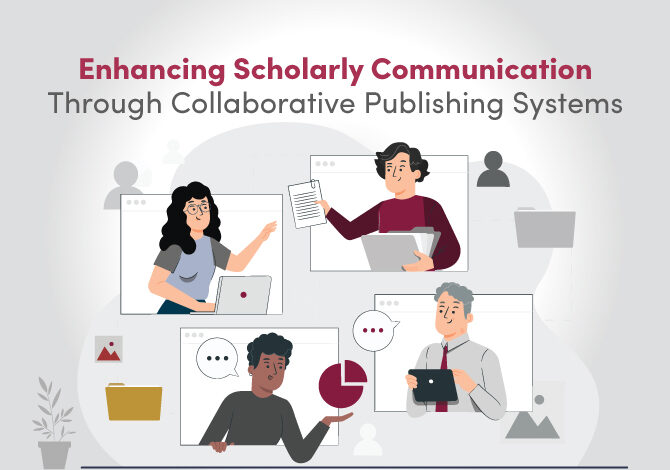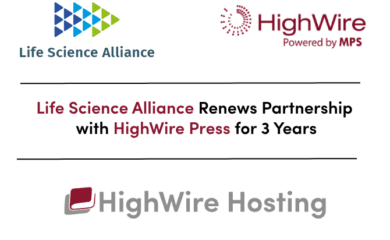The publication process has become extensively automated, with digital systems managing much of the interaction and coordination among authors, editors, reviewers, and other stakeholders engaged in scholarly publishing. Technology not only organizes the publishing workflow but also incorporates new tools and microservices utilizing artificial intelligence and machine learning, enhancing the efficiency for all involved and reducing the time from manuscript submission to its publication.
Yet, it’s necessary to acknowledge that automated systems do not replace human input but only enhance human effectiveness in scholarly publishing. Publishing systems operate most effectively when integrated with the expertise of skilled individuals who can manage and resolve issues that demand judgment and insight. This aspect is often overlooked by system developers who attempt to engineer software to perform all tasks, not recognizing that the capabilities of human creativity and interpretation are indispensable.
In this blog, we will explore how a modular, modular microservice-based workflow system can foster collaboration and facilitate human interaction. Particularly, those systems that utilize single source publishing, can enhance the partnership and community building in academia. Let’s also understand how these systems integrate stakeholders into a cohesive community, improving efficiency and interaction.
The Shift to Automated and Collaborative Systems
Human Element
Despite high automation, human expertise is indispensable. Professionals address complex issues requiring refined judgment and contribute creative insights that enhance the value of published content. They ensure automation supports academic advancement rather than just speeding up processes.
Moreover, the human element is essential in ensuring that automation does not become a straightjacket. Human judgment is essential in making nuanced decisions about the relevance, ethics, and integrity of the scholarly work.
Advancements in Publishing Technology
Artificial Intelligence (AI) and Machine Learning (ML) are now integral to publishing workflows, enhancing various stages of the publication process. These technologies automate routine tasks, such as sorting submissions and checking for plagiarism, which improves efficiency and accuracy.
Broader Technological Advances
Beyond AI and ML, several other technologies are making significant impacts on publishing:
- Cloud Computing: Cloud platforms provide scalable resources, which is important for managing large data sets and hosting publishing platforms. This technology supports variable traffic loads and ensures data security and accessibility.
- Blockchain Technology: There have been an effort to use this technology to enhance copyright protection, for transparent peer review processes, and to ensure research integrity. Blockchain can facilitate new monetization models, particularly in open-access environments. However, there is scepticism that this technology is worthwhile considering the environmental costs.
- Natural Language Processing (NLP): NLP enhances content discoverability through improved indexing, summarization, and semantic search capabilities, enabling deeper content analysis and refined metadata management.
- Data Analytics and Big Data: These tools offer insights into content consumption patterns, helping publishers make informed decisions to optimize content delivery and personalize reader experiences.
- Interactive Content: Advanced digital publishing tools enable the creation of multimedia-rich and interactive content, such as embedded videos and graphs, making scholarly articles more engaging.
- Automated Content Recommendations: Utilizing user data and machine learning, these systems recommend relevant articles to readers, increasing content visibility and reader engagement.
Impact on Publishing Efficiency
These technologies collectively reduce the time from manuscript submission to publication, streamline metadata collection, and ensure the integrity of published content. For example, the modular system DigiCorePro, developed by HighWire and MPS, incorporates these technologies using a modern API-driven architecture. This system not only supports traditional publishing workflows but also seamlessly integrates new tools and microservices, accommodating innovations like interactive peer review and multimedia content without requiring extensive code changes.
Single Source Publishing – A Proven Methodology
Single-source publishing in a workflow system centers on using one primary source of content, and all of the editing, reviewing and other publishing process that take place are performed on that centrally located asset, rather than having users download and upload files. Single-source publishing ensures metadata fidelity, and facilitates consistency and efficiency. HighWire and MPS have built on this approach, leveraging over 20 years of experience to continually refine this methodology.
Core Benefits
Single-source publishing offers several advantages:
- Error Reduction: Minimizes discrepancies by maintaining a single source for content updates.
- Efficient Metadata Handling: Streamlines the collection and distribution of metadata, enhancing discoverability and compliance.
- Speedier Content Processing: Accelerates the journey from submission to publication, making research available faster.
- Encourages collaboration: All of the players can interact with the content in one place at the same time, working together to author, edit and review the content.
The Role of Modular Microservice-Based Systems
Architecture and Flexibility
Modular microservice-based systems represent a significant advancement in the architecture of publishing systems. Unlike traditional monolithic systems that are cumbersome to update and scale, modular architectures are composed of smaller, independent components (microservices) that perform discrete functions. This design allows for high levels of flexibility and scalability, as each microservice can be developed, deployed, and updated independently without affecting the overall system.
These systems are typically API-driven, which means they use Application Programming Interfaces (APIs) to communicate between microservices and with external systems. This approach not only simplifies integration with other tools and platforms but also enables publishers to quickly adapt to new technological advancements or workflow changes without extensive redevelopment.
Case Studies and Use Cases
Use Case 1: Streamlined Manuscript Submission
A scholarly publisher implemented a modular system that integrates a microservice for automatic manuscript formatting. This service checks submissions against publication guidelines and automatically formats them accordingly, significantly reducing the time and effort required by the editorial staff and increasing submission compliance rates.
Use Case 2: Enhanced Peer Review Process
Another example involves a journal that utilized a microservice to integrate interactive peer review functionalities directly into their system. Reviewers can now comment collaboratively in real-time, similar to the functioning of Google Docs. This enhances the quality of reviews and speeds up the revision process.
Use Case 3: Content Personalization
A modular system with a microservice that employs machine learning algorithms was adopted to analyze reader behavior and preferences. This service personalizes content recommendations for each user, increasing reader engagement and satisfaction by delivering more relevant content.
Use Case 4: Integration with Electronic Lab Notebooks
For academic publishers, integrating publishing systems with electronic lab notebooks via APIs has streamlined the transfer of experimental data directly into scholarly articles. This integration ensures data accuracy and saves time for researchers when preparing manuscripts for submission.
These use cases demonstrate the practical benefits of modular microservice-based systems in enhancing the efficiency and adaptability of scholarly publishing workflows. By leveraging such systems, publishers can facilitate greater collaboration, improve the author and reviewer experience, and quickly incorporate emerging technologies into their operations. This adaptability is essential in an industry where the speed and accuracy of information dissemination are important.
Overcoming Challenges with Legacy Systems
Limitations of Old Platforms
Traditional publishing systems, often rooted in technology developed over 20 years ago, face significant limitations in today’s dynamic digital environment.
These older platforms typically lack the flexibility and integration capabilities necessary for modern publishing demands, making it challenging to adapt to new workflows or integrate advanced technologies. They are rigid in structure, difficult to update, and require complex, costly coding for even minor changes, leading to inefficiencies and reduced innovation.
Enhancing Efficiency Through Collaboration
Modern scholarly publishing is about automating processes and enhancing efficiency through active collaboration. Integrating collaborative tools within publishing systems can significantly accelerate publication timelines and improve the quality of scholarly output. This integration promotes a more engaged scholarly community by facilitating seamless interaction among authors, reviewers, editors, and publishers.
Community Initiatives and Services Integration
The integration of community initiatives and services plays a crucial role in modernizing publishing systems. Initiatives like CHORUS, ORCID, Crossref, NISO, STM’s Integrity Hub, and OA Switchboard are eminent in creating a more connected and transparent scholarly communication ecosystem:
- CHORUS: Tracks the open access status and usage data of research articles, ensuring compliance with funder mandates.
- ORCID: Provides unique identifiers for researchers, enhancing the accuracy of authorship credits.
- Crossref: Facilitates citation linking and metadata distribution, improving the discoverability and impact of research.
- NISO: Develops standards that enhance the reliability and interoperability of publishing technologies.
- STM’s Integrity Hub: Aims to uphold research integrity by creating tools and protocols that support the verification and reproducibility of scientific outputs.
- OA Switchboard: Connects publishers, institutions, and funders to streamline the management and implementation of open access policies and funding.
These services must be seamlessly integrated into publishing platforms through modular, API-driven architectures that support real-time collaboration and data exchange.
Such integration not only speeds up the publishing process but also ensures that the systems are strong, flexible, and capable of adapting to future technological advances and changes in the scholarly communication industry.
Impact of Collaborations
Collaborative features within publishing systems enhance engagement and aids in building a more cohesive community. By ensuring that all participants in the scholarly publishing process can easily share data, verify research, and track outputs, these systems not only improve the efficiency of publishing processes but also enhance the overall integrity and reliability of scholarly communication.
Looking Ahead – The Future of Scholarly Publishing Systems
As scholarly publishing evolves, several key trends are set to alter the industry:
- Increased Use of Video: The integration of video content in scholarly articles is gaining momentum. Videos can offer a more dynamic way to present research findings, especially in fields like experimental sciences, medical procedures, and educational content.
- New Peer Review Methods: Innovations such as open peer review, post-publication peer review, and community-driven review processes are becoming more prevalent. These methods aim to increase transparency, speed up the review process, and enhance the quality and credibility of published research.
- Integration with Electronic Lab Notebooks (ELNs): Linking publishing systems directly with ELNs allows seamless transfer of experimental data into publications, enhancing data accuracy, reproducibility, and compliance with data sharing policies.
Bottom Line
Scholarly publishing facilitates the dissemination of academic research. Traditionally focused on print, it has transitioned to digital platforms, expanding global access and transforming how we consume academic knowledge.
Modern publishing systems play an important role in enhancing productivity and facilitating a collaborative scholarly community. By integrating advanced technologies and modular microservices, these systems reduce inefficiencies, speed up the publishing process, and enhance the overall quality of scholarly communication.
The publishing process can be a collective activity rather than a series of isolated tasks. A system capable of integrating automated microservices while allowing skilled publishing professionals to engage in the process offers a superior solution over a purely software-based approach.
Consider how embracing these innovations can help your organization stay competitive in the fast-growing world of scholarly publishing. Engage with technology providers like HighWire and MPS to explore how their cutting-edge solutions can be tailored to meet your specific needs, ensuring you remain at the front of scholarly publishing innovation.



